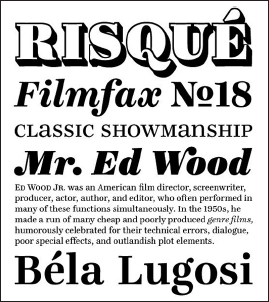Jargon.
Jargon. Jargon is the special vocabulary of a trade or profession, enabling members to speak and write concisely to one another. Reserve jargon for an audience that will understand your terms. The example that follows, from a blog about fonts and typefaces, uses jargon appropriately for an interested and knowledgeable audience.

The Modern typeface classification is usually associated with Didones and display faces that often have too much contrast for text use. The Ingeborg family was designed with the intent of producing a Modern face that was readable at any size. Its roots might well be historic, but its approach is very contemporary. The three text weights (Regular, Bold, and Heavy) are functional and discreet while the Display weights (Fat and Block) catch the reader’s eye with a dynamic form and a whole lot of ink on the paper. The family includes a boatload of extras like unicase alternates, swash caps, and a lined fill.
—fontshop.com blog
Depending on the needs of the audience, jargon can be irritating and incomprehensible—or extremely helpful. Terms that begin as jargon for specialists (such as asynchronous or vertical integration) can quickly become part of the mainstream if they provide a useful shorthand for an otherwise lengthy explanation. Before you use technical jargon, remember your readers: if they will not understand the terms, or if you don’t know them well enough to judge, then say what you need to say in everyday language.